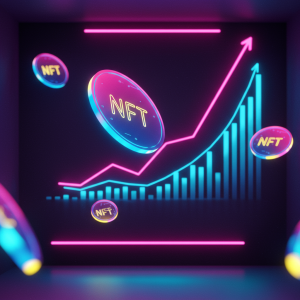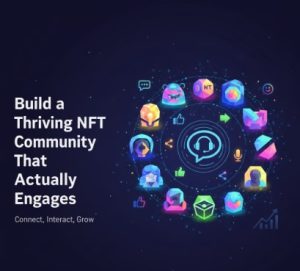The Hidden Economics of NFT Marketplaces: Fee Structures and Optimization Strategies

The financial mechanics underlying non-fungible token transactions often remain obscured beneath the excitement of drops, sales, and collecting. Yet understanding the complex fee structures of various marketplaces represents perhaps the most consequential factor determining actual profits for creators and real costs for collectors. The difference between optimal and suboptimal platform selection can dramatically impact returns—sometimes transforming profitable ventures into losing propositions or making seemingly expensive acquisitions surprisingly economical.
The Multifaceted Nature of NFT Marketplace Fees
The headline commission percentages advertised by marketplaces tell only a fraction of the complete financial story. Behind these prominently displayed figures lies a complex web of additional charges that significantly impact transaction economics. Understanding these layered costs proves essential for anyone serious about NFT creation or collecting.
Gas fees represent the most variable and potentially substantial additional cost. These network transaction charges fluctuate dramatically based on blockchain congestion, transaction complexity, and network-specific factors. During periods of high network activity, gas costs occasionally exceed the value of modestly priced NFTs themselves, particularly on the Ethereum mainnet. This reality creates stark advantages for marketplaces operating on more cost-efficient blockchains or layer-2 solutions during congested periods.
Initial minting fees introduce another critical consideration. Some platforms cover these costs through shared contracts, while others require creators to shoulder the full expense of deploying individual contracts. This distinction creates significant cost variations when launching new collections, especially for creators releasing multiple projects or extensive collections.
Currency conversion fees often go entirely unnoticed until transaction completion. When marketplaces denominate prices in cryptocurrencies but users purchase with credit cards or alternative payment methods, substantial conversion premiums may apply. These seemingly minor percentage points accumulate meaningfully on higher-value transactions.
Withdrawal costs represent another frequently overlooked expense. While marketplace wallets facilitate seamless trading, eventually most users transfer assets to external wallets or convert to fiat currency. These exit transactions incur their own fees that vary substantially between platforms and can significantly impact overall economics, especially for frequent traders making multiple smaller-value transactions.
Primary Marketplace Landscape and Fee Comparison
The established NFT marketplaces demonstrate widely varying approaches to fee structures, each optimized for different user types and transaction patterns.
OpenSea, as the industry’s largest marketplace by volume, sets important benchmarks with its 2.5% seller fee on secondary sales. The platform covers initial contract deployment costs for creators using its shared contract but charges gas fees for individual mints and transfers. This structure benefits creators launching smaller collections who might find individual contract deployment prohibitively expensive. However, high-volume sellers sometimes find more competitive rates on newer platforms specifically targeting their segment.
Rarible implemented a more complex dynamic fee structure ranging from 0.5% to 5% based on marketplace activity and token holdings. This approach rewards active participants in the platform’s ecosystem with more favorable rates while charging higher fees to occasional users. The variable nature of this system makes cost prediction challenging, potentially benefiting highly engaged users while disadvantaging casual participants.
Foundation maintains a straightforward but relatively high 15% commission on primary sales and 10% on secondary transactions. These premium rates reflect the platform’s curated approach and established collector base, potentially justifying higher fees through access to serious buyers and enhanced visibility. For creators whose work commands premium prices, these higher percentages may represent worthwhile investments in reaching appropriate collector audiences.
SuperRare employs a distinctive model charging 15% on initial sales but only 3% on secondary transactions. This structure incentivizes active secondary markets while extracting higher value from primary transactions where artists realize their largest gains. The platform justifies these premium rates through careful curation and collector development, focusing on higher-value single edition works rather than large collections.
Emerging Alternatives and Fee Innovation
New marketplace entrants continue disrupting established fee models through innovative approaches designed to attract creators and collectors alike. These alternatives often highlight the excessive costs embedded in traditional marketplace structures.
Zero-fee marketplaces represent perhaps the most dramatic innovation, eliminating traditional percentage commissions entirely. Models like LooksRare initially introduced this approach, generating revenue instead through native tokens and trading rewards rather than direct commissions. While skeptics question the long-term sustainability of such models, they have successfully highlighted flexibility in marketplace economics beyond traditional commission structures.
Aggregator platforms provide another approach to fee optimization by comparing prices and costs across multiple marketplaces simultaneously. These services enable collectors to identify the most advantageous venue for specific transactions, considering the combined impact of listing prices and associated fees. As interoperability between marketplaces increases, these aggregators play increasingly important roles in driving market efficiency.
At NFTMarketo, our analysis indicates that marketplace fee transparency correlates strongly with creator satisfaction and platform loyalty. Our research shows creators overwhelmingly prefer predictable, clearly explained fee structures even when slightly higher than alternatives with more complex or variable models. This preference highlights the importance of fee clarity alongside raw percentages when evaluating marketplace economics.
Subscription-based alternatives have emerged offering unlimited or reduced-fee transactions for fixed monthly payments. These models benefit frequent traders by converting unpredictable percentage-based costs into predictable fixed expenses. However, occasional participants typically find traditional commission structures more economical than subscription commitments.
Optimization Strategies for Creators
Artists and projects can implement several strategies to maximize returns through thoughtful marketplace selection and fee management.
Strategic platform selection represents perhaps the most consequential decision. Rather than defaulting to the largest or most visible marketplaces, savvy creators analyze fee structures in relation to their specific project characteristics. High-value, single-edition works often justify premium platform fees when accompanied by curatorial support and established collector bases. Conversely, larger collections with more accessible price points typically benefit from platforms with lower fees and higher traffic, even without curatorial attention.
Collection size significantly impacts optimal platform choice. Creators releasing large collections (1,000+ items) should prioritize platforms with efficient minting processes and reasonable gas fee structures. The cumulative impact of per-item gas costs can render otherwise attractive commission rates irrelevant when deploying substantial collections.
Pricing strategy adjustments help offset marketplace fees while maintaining target revenues. However, simple percentage increases often prove self-defeating by reducing purchase likelihood. More sophisticated approaches involve careful price banding that considers psychological thresholds and competitive positioning rather than mechanical fee addition.
Cross-platform presence enables creators to leverage different marketplaces for distinct purposes. Some artists maintain primary sales on curated platforms with higher fees while directing secondary activity toward more economical venues. This hybrid approach maximizes both discovery and economic efficiency when implemented thoughtfully.
Timing considerations around network congestion can substantially impact profitability. Launching collections during periods of lower network activity significantly reduces gas costs on variable-fee networks like Ethereum. While this approach requires flexibility and market monitoring, the savings often justify the additional planning complexity.
Collector Strategies for Fee Minimization
Collectors face their own set of optimization challenges when navigating marketplace fee structures. Several approaches can substantially reduce acquisition costs without sacrificing collection quality.
Direct creator purchases often eliminate marketplace commissions entirely. Many artists offer pieces through personal websites or dedicated platforms that charge significantly lower fees than major marketplaces. This approach benefits both parties by redirecting typical marketplace commissions directly between creator and collector.
Secondary market timing significantly impacts total acquisition costs. Patient collectors monitoring gas fee fluctuations can identify windows of network efficiency that substantially reduce transaction costs, particularly for modestly priced pieces where gas represents a significant percentage of total expenditure.
Alternative blockchain exploration reveals substantial cost variations. Collections on Solana, Tezos, or layer-2 Ethereum solutions typically involve significantly lower transaction costs than Ethereum mainnet equivalents. As cross-chain functionality improves, switching between ecosystems based on fee considerations becomes increasingly viable.
Bundle purchases create another optimization opportunity on platforms supporting multiple-item transactions. Acquiring several pieces within a single transaction amortizes gas costs across multiple acquisitions, substantially reducing per-item expenses for collectors building larger collections.
Payment method selection significantly impacts overall economics. Direct cryptocurrency payments typically incur lower total costs than credit card or alternative payment options that involve currency conversion fees or additional processing charges. These differences become particularly meaningful for higher-value acquisitions.
The Future of Marketplace Economics
Several emerging trends suggest the direction of marketplace fee evolution and future optimization possibilities.
Creator royalty enforcement mechanisms continue evolving in response to platforms attempting to circumvent these payments. Technological solutions increasingly embed royalty requirements at the smart contract level rather than relying on marketplace implementation. These developments protect creator interests but may introduce additional complexity into fee structures and platform choices.
Cross-chain standardization efforts promise greater interoperability between previously isolated blockchain ecosystems. This convergence will likely enable more sophisticated fee optimization strategies spanning multiple networks while simplifying user experience through abstracted complexity.
Decentralized marketplace governance gives stakeholders direct influence over fee structures through tokenized voting systems. This approach potentially aligns platform economics more closely with user interests than traditional profit-maximizing models, though governance participation remains limited to the most engaged participants.
Layer-2 scaling solutions continue reducing base transaction costs on popular networks like Ethereum. As these technologies mature and achieve wider adoption, the gas fee component of transaction costs should decrease substantially, shifting optimization focus toward platform commissions rather than network expenses.
Regulatory developments loom increasingly large over marketplace economics. As tax authorities and financial regulators establish clearer frameworks for digital asset transactions, compliance costs will likely impact fee structures. Forward-thinking participants should monitor these developments closely while preparing for potential changes to current optimization strategies.
Conclusion
Marketplace fee optimization represents much more than simple cost-cutting—it fundamentally impacts creator sustainability, collector access, and overall ecosystem health. The substantial variations between platforms create genuine opportunities for informed participants to significantly improve transaction economics through thoughtful platform selection and timing.
For creators, the optimal approach typically involves matching project characteristics with appropriate platforms rather than universally seeking the lowest headline fees. Collection size, unit pricing, target audience, and timing flexibility all influence ideal marketplace selection. This nuanced analysis often yields better results than simply minimizing commission percentages.
For collectors, combining alternative networks, direct creator relationships, and strategic timing can substantially reduce acquisition costs without sacrificing collection quality. The most sophisticated participants leverage these approaches while maintaining awareness of evolving platform policies and technological developments.
As the NFT ecosystem continues maturing, expect fee structures to become simultaneously more competitive and more complex. Marketplace differentiation will increasingly occur through specialized services and community features rather than purely economic factors. However, the fundamental importance of understanding and optimizing transaction costs will remain essential for anyone seriously engaged in this rapidly evolving market.








